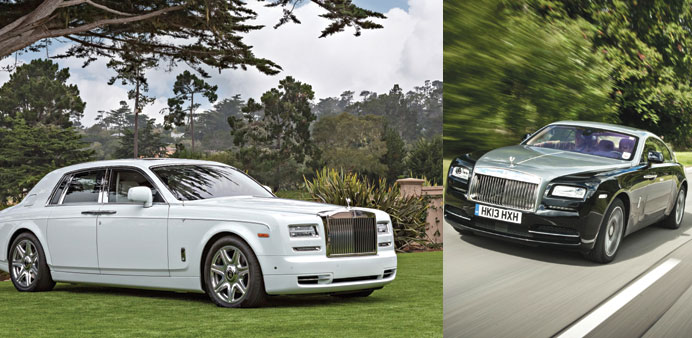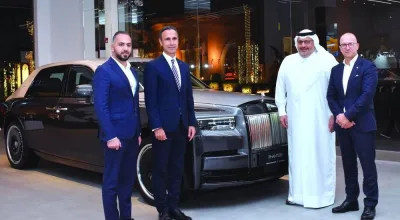Rolls Royce Motors recently organised a drive event for its Phantom Series II and Wraith models.
According to Rolls-Royce the design requirements for the Wraith were to deliver the most “dynamic, involving driving experience in the marque’s 109 year history”.
“The car has the swept lines of the fastback, a style whose origins can be found in 1930s automotive design. Performance complements the styling. A shorter wheelbase, wider rear track, and a twin turbo V12 that puts out 624bhp give expression to the car’s looks.”
The Wraith is also every inch a Rolls-Royce. It debuts the most intelligent drive train ever to feature in a Rolls-Royce, including the application of Satellite Aided Transmission (SAT). This processes GPS data to predict the driver’s next move and automatically select the right gear for the road ahead. Following a sweeping bend, for example, the optimum gear is always pre-selected.
Inside the Wraith’s coach doors details include the Canadel Panelling and blood orange needle tips for speedometer and power reserve. In the ceiling is the Starlight headliner – offered for the first time beyond the Phantom range. This features thousands of tiny fibre optic lamps hand-woven by craftspeople into the roof lining. It remains one of the company’s most popular features.
With a wider rear track, longer bonnet, raked glass house and deeply recessed pantheon grille, this is a Rolls-Royce with its own unique character.
Frameless coach doors and the absence of a b-pillar allow effortless entry and egress that are so important to Rolls-Royce customers. Doors are closed from inside at the touch of a button.
Wraith is the most powerful Rolls-Royce ever. It develops 624 bhp, from its 6.6 litre twin-turbo V12, an engine that features direct petrol injection to maximise efficiency and reduce emissions. The car accelerates from rest to 60mph in just 4.4 seconds and on to an electronically governed top speed of 155mph.
Power is transmitted through an eight speed, automatic ZF transmission - 800NM of torque is available from 1,500 rpm.
Rolls-Royce Wraith also features the ability to multi-shift down gears. When the accelerator is pushed rapidly, the car knows the driver is seeking to maximise acceleration and moves directly to an appropriate lower gear.
The Phantom Series II features new technology, and enhancements to the drive-train.
The addition of a new 8-speed automatic gearbox and rear differential complement the V12 direct injection engine, improving dynamics and the ride.
An improved user interface, as well as the addition of new driver assistance technologies, have been built on a new electronics’ platform for Phantom Series II. The satellite navigation system, has been fully updated with functions that include 3D map display with landscape topography, guided tours, as well as enhanced points of interest and composite route planning.
Arguably the best place to experience Phantom’s luxury is from the rear seat of the Phantom Saloon where passengers - elevated by 18 mm - are presented with a grand view down the long sweep of the bonnet and onto the Spirit of Ecstasy.
Rolls-Royce interiors are the perfect environment in which to relax and unwind in welcoming silence. But they can also be a centre for entertainment. The theatre configuration adds two monitors within veneered picnic tables for rear seat passengers which are linked to a multi-media player, mounted in a compartment at the rear of the centre console. Occupants can view separate content wherever they may be seated, front or rear.
Every Phantom hosts a naturally aspirated 6.75 litre V12 engine. This direct-injection petrol engine develops 531lb ft of torque (720Nm) more than three quarters of which is available at 1,000 rpm. The torque curve remains largely flat between 1,000 and 3,000 rpm - an important prerequisite for effortless city driving - and moves occupants from 0 to 60 in 5.7 seconds and onto an electronically limited top speed of 149mph.- Roshan Cherian

The Rolls-Royce Phantom. Right: The Rolls-Royce Wraith

